Almond Flour
Make your own healthy almond flour at home with this simple recipe. This is a gluten-free flour that’s ready in a matter of minutes. If you’re into grain-free baking, this flour is perfect to add to your baked goods to make them low-carb.
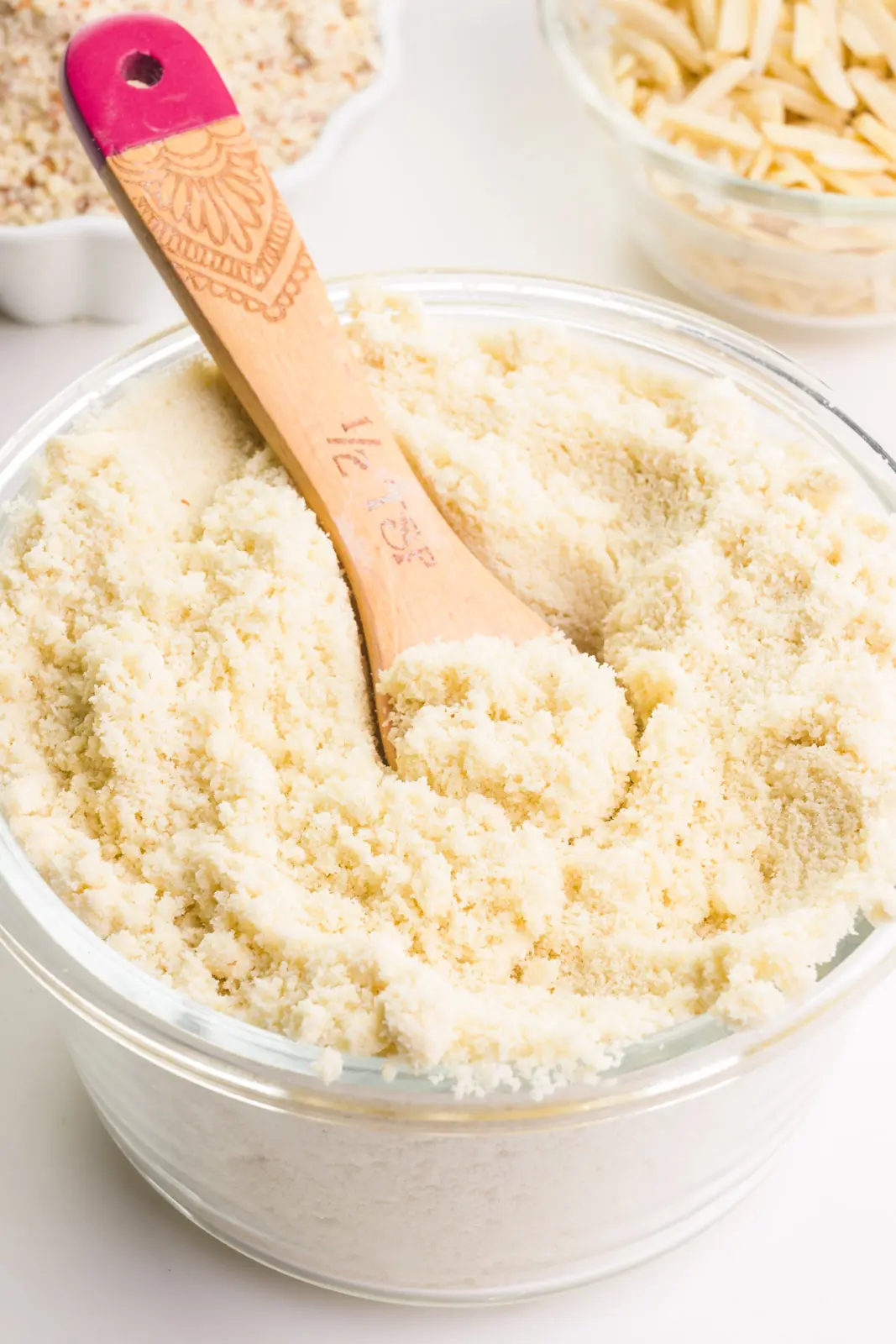
It’s much easier to buy blanched almond flour in the stores these days, but you can save some plastic bags and money by making your own at home. I love adding a little bit of almond meal to my baked goods, like these vegan chocolate chip cookies.
What’s the Difference Between Almond Flour and Almond Meal?
Fine almond flour is made from blanched almonds with the skins removed. Processing these almonds into a flour consistency creates a light flour that can be used in many baked goods. Almond meal is made from ground almonds with the skins. Because of the skins, the flour is darker and the texture is a bit heavier.
What Makes This Recipe Shine?
- Using almond slivers means makes the best almond flour because they’re blanched and dried, making them perfect for making flour
- Making flour from a food processor or a blender is easy
- Follow the post tips for blanching and skinning raw almonds for almond nut flour in a few simple steps
Key Ingredients
You can find the full printable recipe, including ingredient quantities, below. But first, here are some explanations of ingredients and steps to help you make this recipe perfect every time.
Here are the ingredients you’ll need for this recipe, including substitution ideas:
- Raw Almonds — You can buy raw almonds at places like Costco, grocery store chains, or health food stores. Using raw almonds is perfect for blanching and removing the skins (more on that below).
- Almond Slivers — Skip blanching and peeling almonds by hand and buy almond slivers with the skin already removed. You can find these in the baking section of most grocery stores.
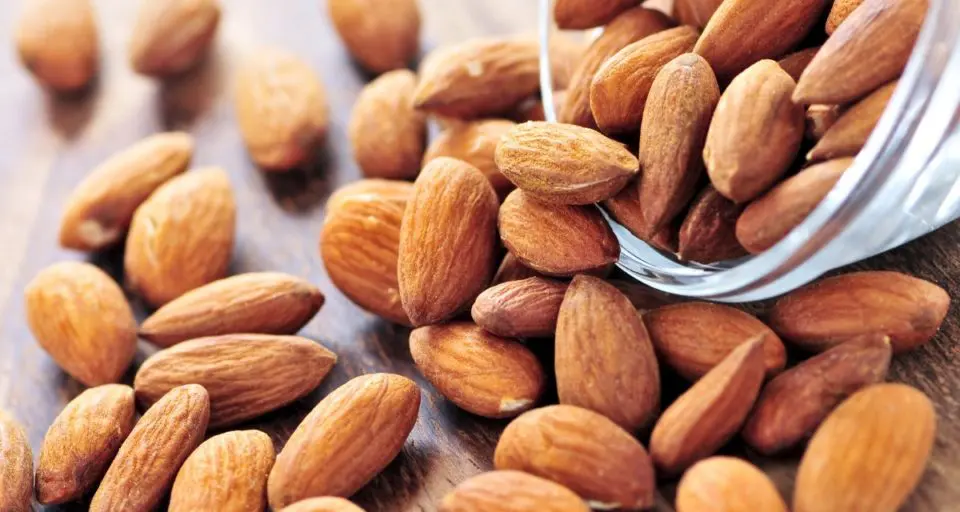
What Almonds are Best for Making Flour?
There are two almonds to choose from when making almond flour, raw almonds or blanched slivered almonds. When it comes to “raw” almonds, they are not technically raw as they typically are heated for pasteurization purposes. However, there is a noticeable difference in texture between raw and roasted almonds. I mostly buy raw almonds at Costco. You can either blanch and remove the almond skins yourself or use slivered almonds, which you can find at a variety of stores, including Target and most grocery stores.
How to Make Almond Flour
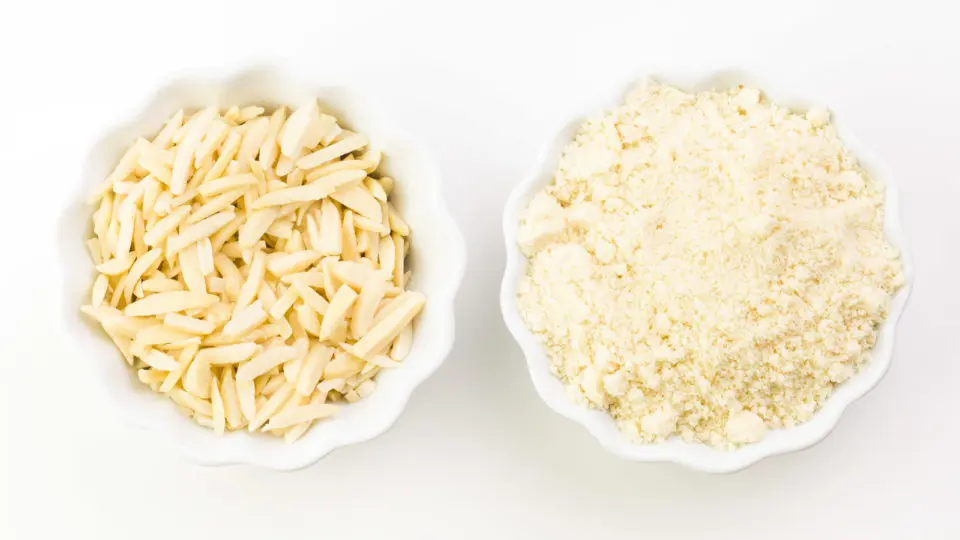
You can make your flour either in a food processor or blender.
- Food Processor Method: Add almond slivers to a food processor and pulse in short bursts until the almonds are broken down into smaller bits. Use a rubber spatula to remove any almond bits on the side or bottom of the bowl. Repeat processing until a flour mixture is achieved.
- Blender Method: Add almond slivers to a blender jar and pulse in short bursts until the almonds are broken down into smaller bits. Use a rubber spatula to remove any almond bits on the side or bottom of the jar. Repeat processing until a flour mixture is achieved.
Here are more detailed instructions with step-by-step photos:
Step One: Add Almond Slivers to a Blender
If you’re using store-bought almond slivers, add them directly to the blender. If you’re using homemade blanched almonds, see more on preparing them for flour below.
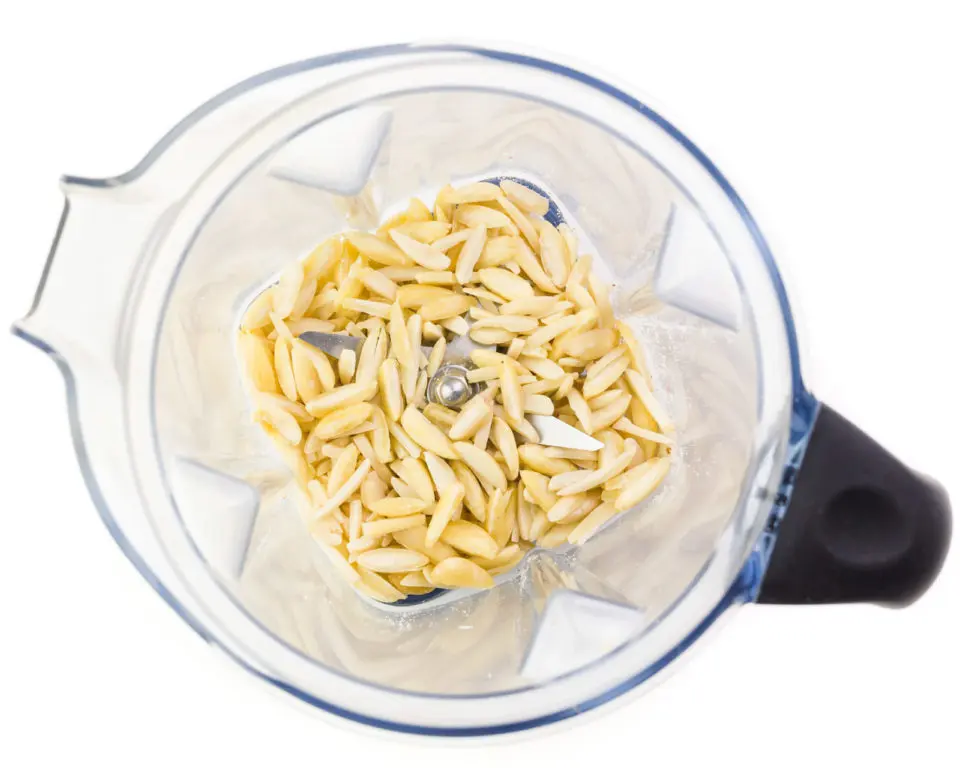
Step Two: Process to Create Flour
Whether you’re using a food processor or a blender your goal is to process the nuts into a fine, flour-like powder. Here are my favorite steps for doing that:
- Add the almond slivers to a food processor or high-speed blender.
- Pulse on low speed until broken down into smaller pieces.
- Use a rubber spatula to scrape down the sides of the bowl and below the blades.
- Pulse again, gradually increasing the speed to high until you achieve a flour-like consistency
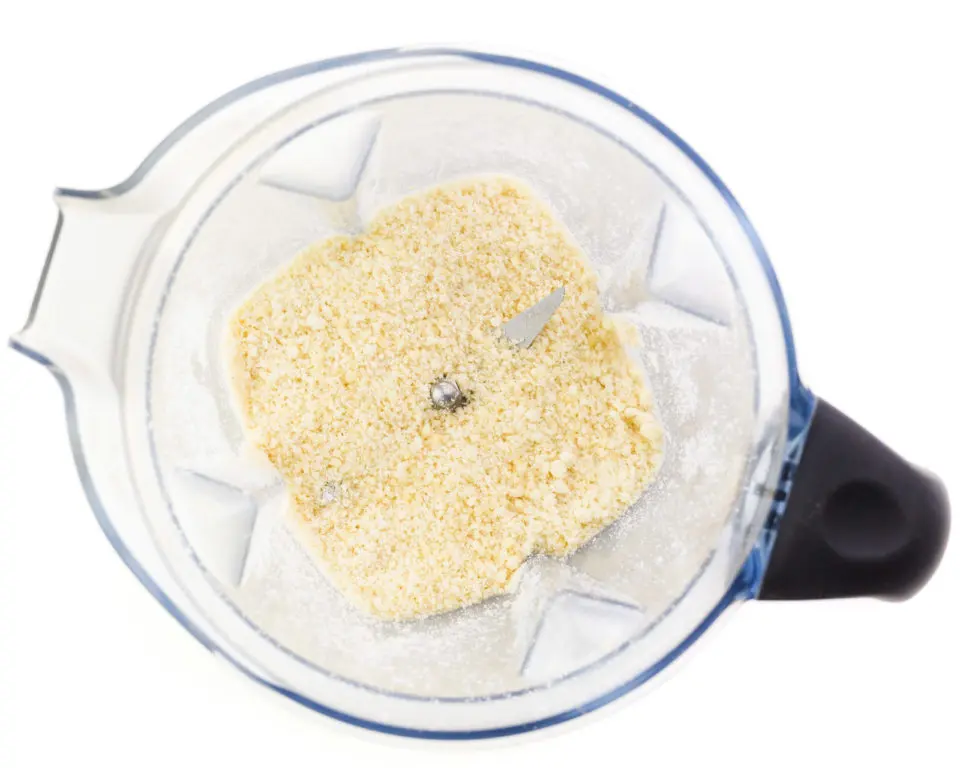
How to Blanch Almonds
Using almond slivers makes this recipe easy. However, if you don’t have almond slivers or find them too expensive, you can blanch almonds for your homemade almond flour. Here are the steps to do that:
- Preheat the oven to its lowest setting, 200°F/93°C or lower. Then turn off the heat.
- Bring water to a boil in a medium saucepan.
- Add almonds and set a timer for one minute.
- After the one-minute mark, drain almonds with a strainer and set them aside until cool enough to handle.
- Press the almonds between two fingers, gently pushing until the almond separates from the peel.
- Reserve the peels to add to things like Green Smoothies
- Transfer skinned almonds to a pan lined with parchment paper and place the pan in the oven (which should be warm, but not hot), and let them sit for 10 to 20 minutes until thoroughly dried.
Blanched almond nut flour requires making sure the almonds are thoroughly dried before processing them. That’s why that last step in the process is so crucial.
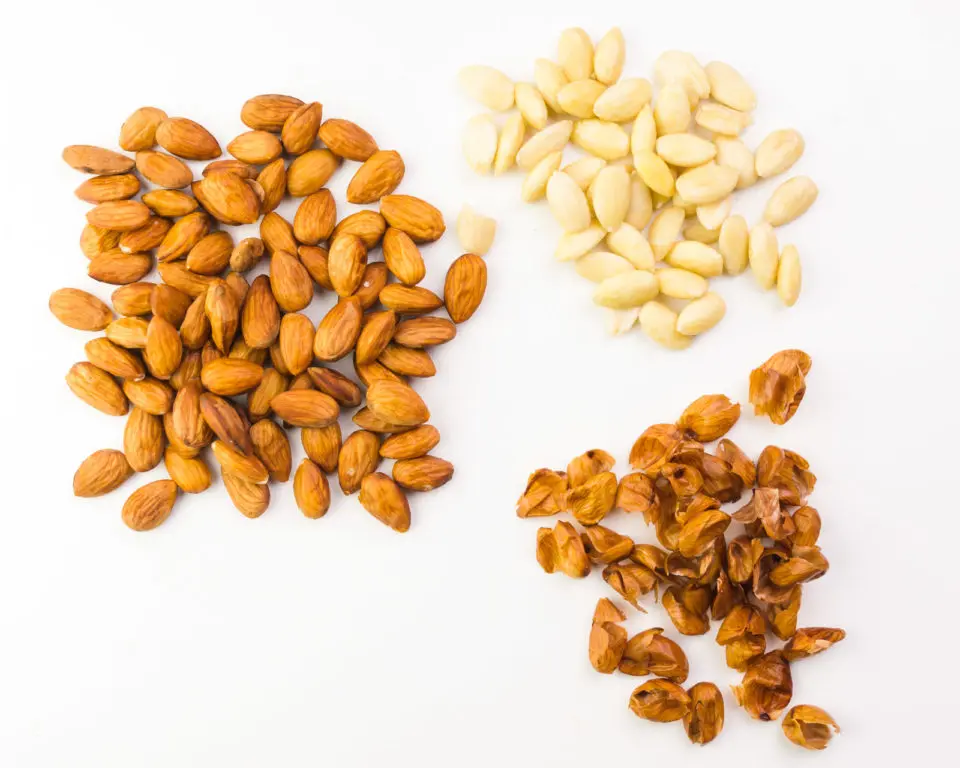
Frequently-Asked Questions
Can you substitute almond flour for all-purpose flour?
You can substitute almond nut flour for all-purpose flour in many baked goods as long as you follow a few basic rules. Substituting up to 25% of all-purpose flour can create tender baked goods. To use 100% flour from almonds, you’ll need to adjust the recipe to ensure it has proper binding and lift so you don’t end up with overly dense baked goods.
Is almond flour gluten-free?
If you’re on a gluten-free diet or simply reducing gluten in your diet, almonds are a great resource because they are gluten-free. Grinding them and using almond nut flour in your baked goods is a great way to enhance your gluten-free baking.
Is almond flour keto friendly?
Most nuts make low-carb flour, and the powdery flour made from almonds is no exception. One cup of almond flour has 23 grams of carbs and 11 grams of fiber, leaving 12 grams of net carbs. That makes it a perfect flour substitute for a keto or low-carb diet.
Why is almond flour so expensive?
There are two main reasons buying flour from almonds at the store is so expensive: 1) Because it’s made entirely from almonds, it tracks closely to the price of almonds, and 2) Because of lower demand than wheat flour, almond nut flour is more expensive than other flour.
Baking with Almond Flour
You can use almond nut flour 1:1 for all-purpose flour, but it does require using an egg replacer such as a Flax Egg or Chia Egg. Getting the binding right can be the trickiest part when it comes to substituting flours in Vegan Baking.
That said, I like adding nut flour in addition to all-purpose flour. I do this by reducing all-purpose flour by about ¼ cup and using flour from almonds in its place. This adds delicious moisture and soft texture to my baked goods, such as Vegan Chocolate Chip Cookies or Vegan Brownies.
Almond Nutrition
What’s the benefit of using this nut flour? Because of the almond flour nutrition! It’s low in carb (only about 3 net carbs per serving, and perfect for paleo diets. In addition, almonds are nutritious. They’re a great source of Vitamin E, fiber, magnesium, and so much more!
Storage Tips
Almonds, like most nuts, have oils that can go rancid when exposed to heat and/or humidity. Transfer the flour immediately to an airtight container and keep it at room temperature in a cool, dry cupboard for up to a month or in the fridge for up to a year. You can freeze it in freezer-safe containers/bags for up to 2 years.
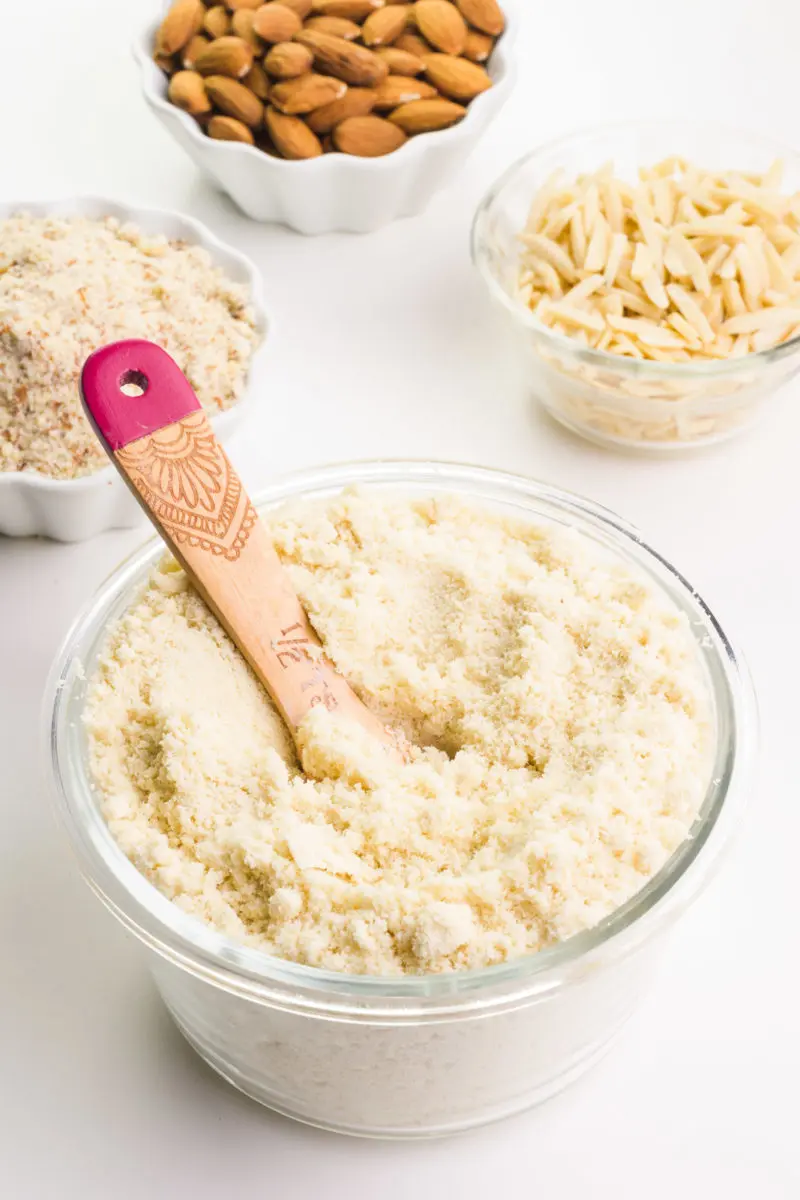
Almond Flour Recipes
You can use flour from almonds in place of all-purpose flour in a number of recipes. Here are some recipes that use almond meal or flour:

Almond Flour
Ingredients
- 1 cup almond slivers
Instructions
- Food Processor Method: Add almond slivers to a food processor and pulse in short bursts until the almonds are broken down into smaller bits. Use a rubber spatula to remove any almond bits on the side or bottom of the bowl. Repeat processing until a flour texture is achieved.
- Blender Method: Add almond slivers to a blender jar and pulse in short bursts until the almonds are broken down into smaller bits. Use a rubber spatula to remove any almond bits on the side or bottom of the jar. Repeat processing until a flour mixture is achieved.
- To Blanch Almonds: If you prefer to blanch almonds at home, preheat your oven to its lowest settings, 200°F/93°C or lower. Then turn off the heat. Bring water to a boil in a medium saucepan. Add 1 cup of raw almonds and set a timer for one minute. Then remove from heat and drain almonds in a strainer. Set them aside until cool enough to handle. Press the almonds between two fingers, gently pushing until the almond separates from the peel. Transfer skinned almonds to a pan lined with parchment paper and place the pan in the oven (which is now warm, but not hot). Let them sit for 10 to 20 minutes to thoroughly dry out.
Recommended Equipment
(The products above contain sponsored links to products we use and recommend)
The nutrition information shown is an estimate provided by an online nutrition calculator and should not be considered a substitute for a professional nutritionist’s advice.
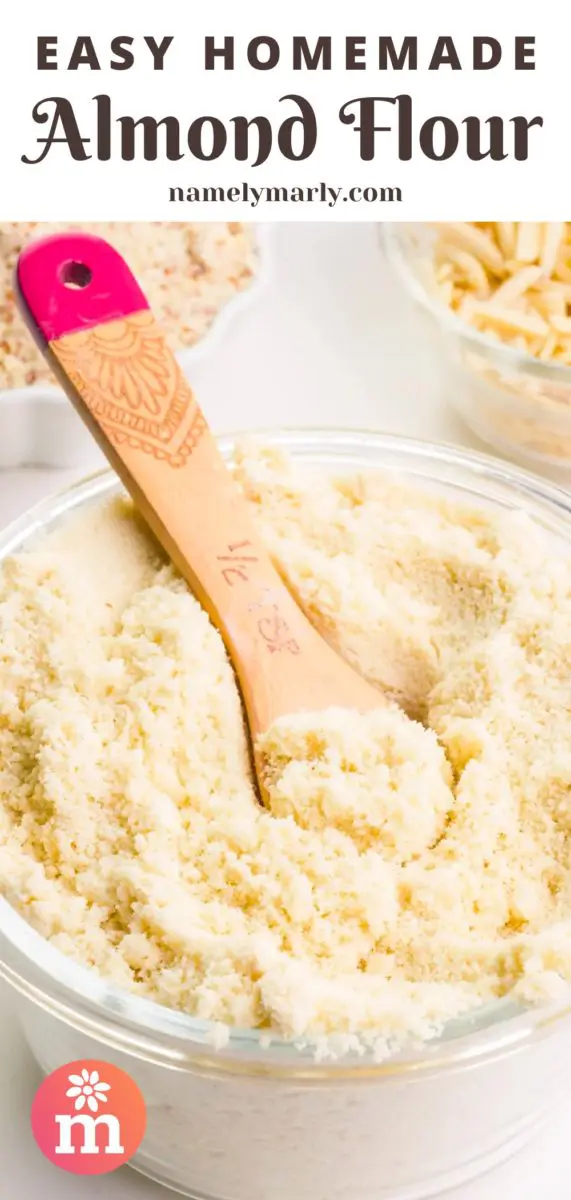
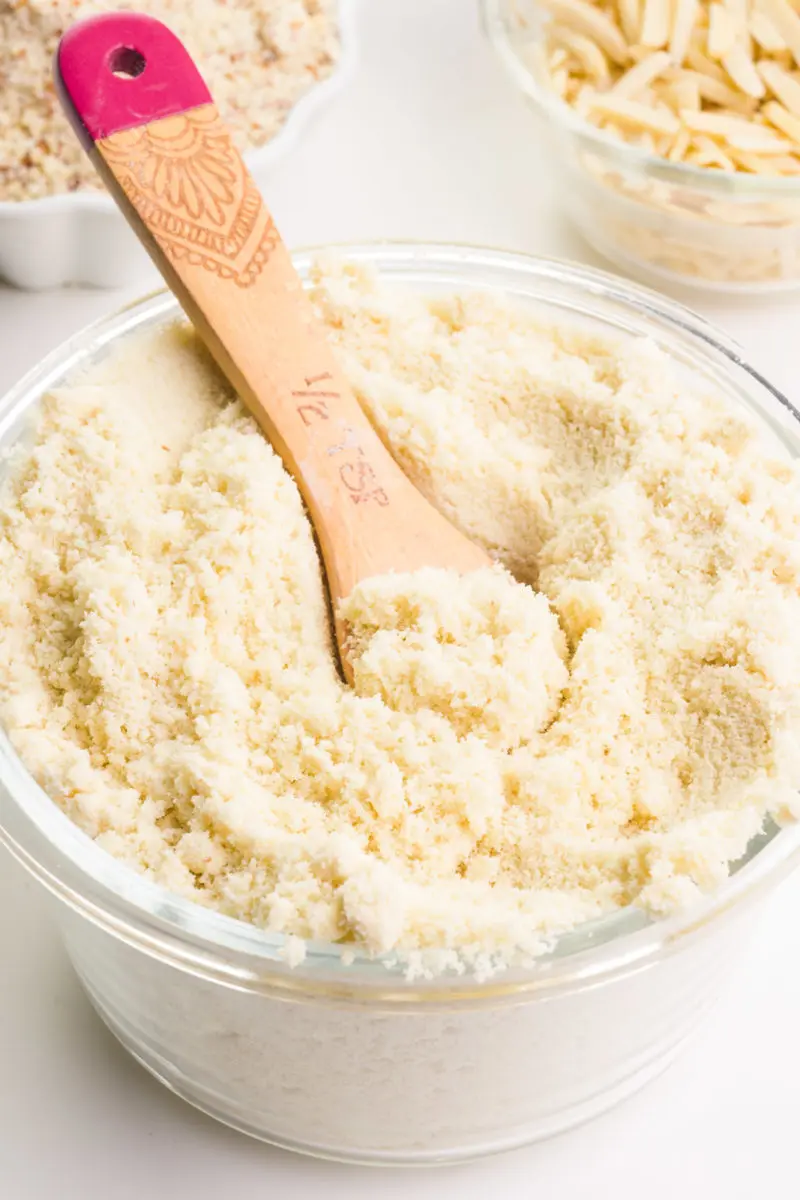
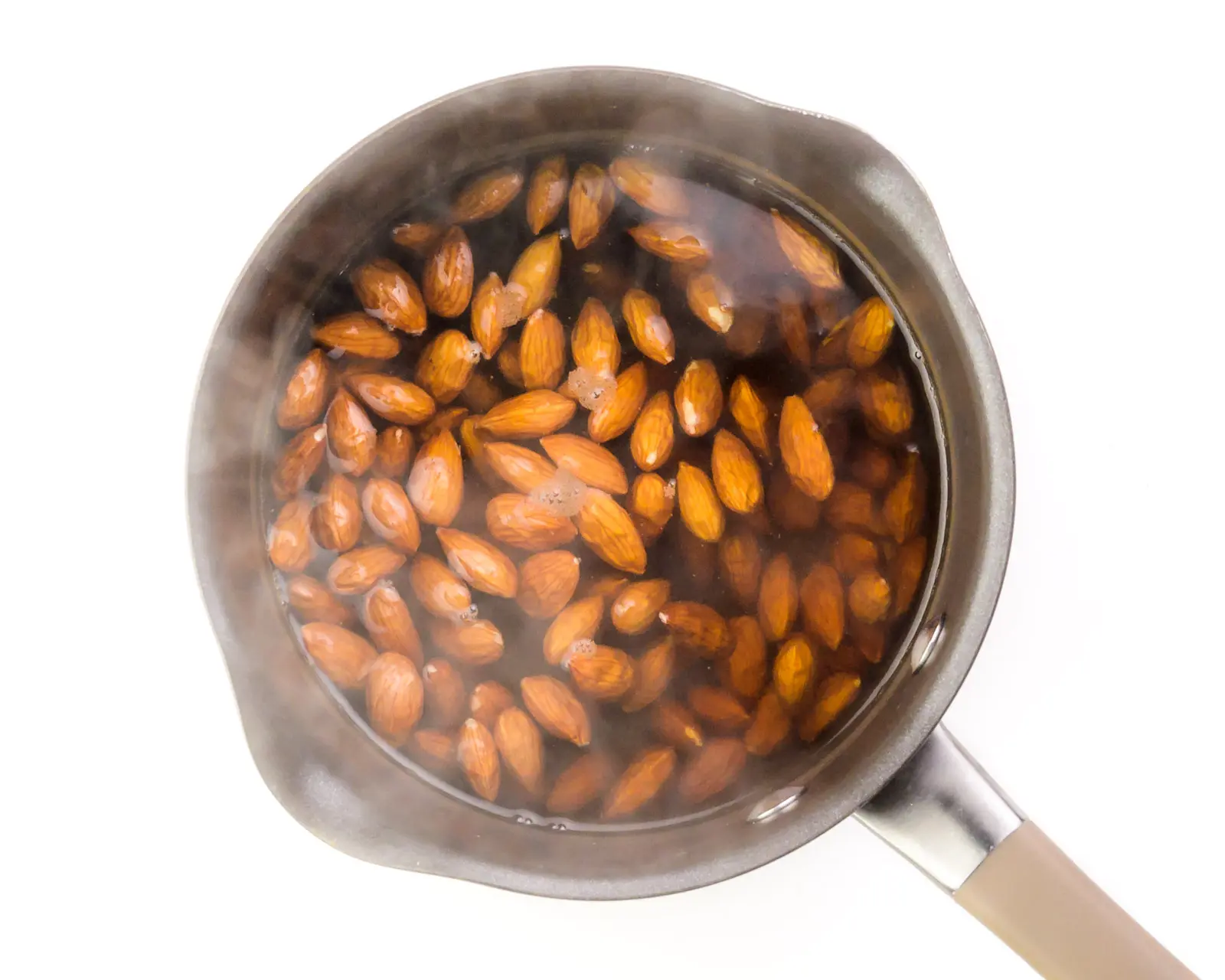

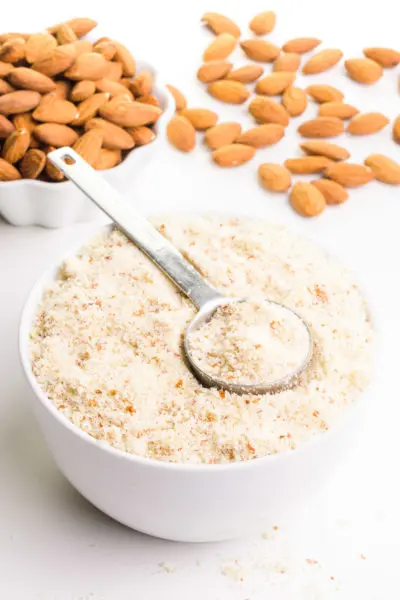




Brilliant info excellent information for this. Almond flour as it has a short shelf time why buy a large bag online when you can make your own fresh as you need it perfect thankyou